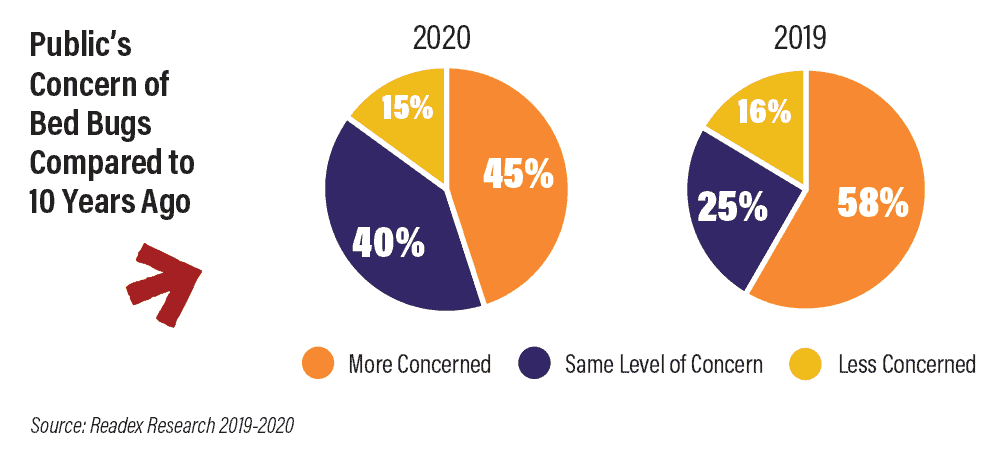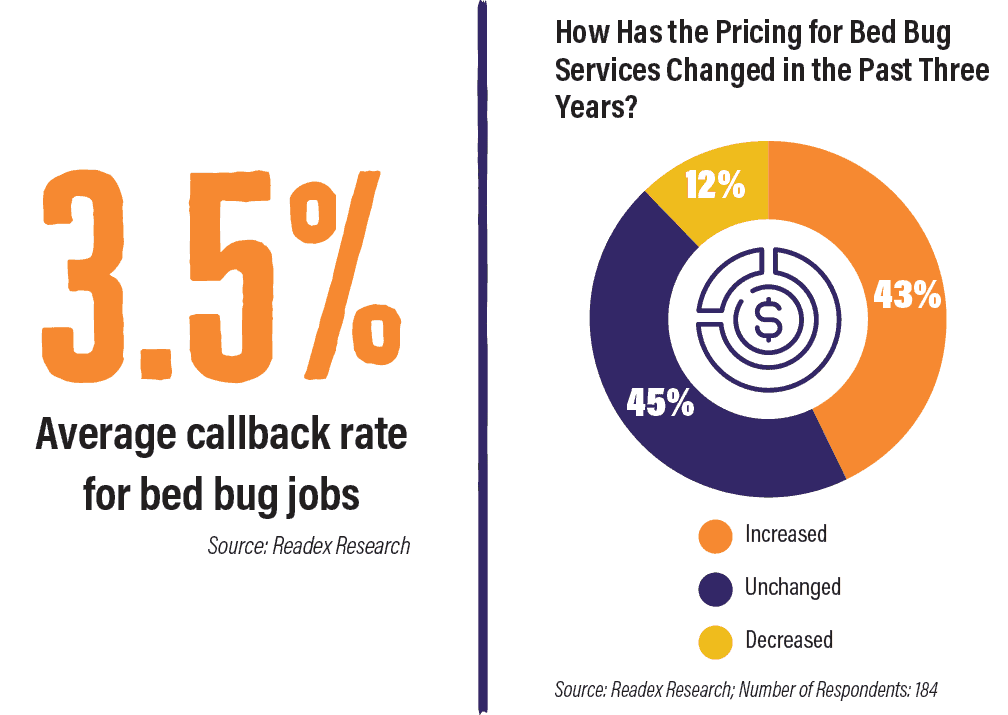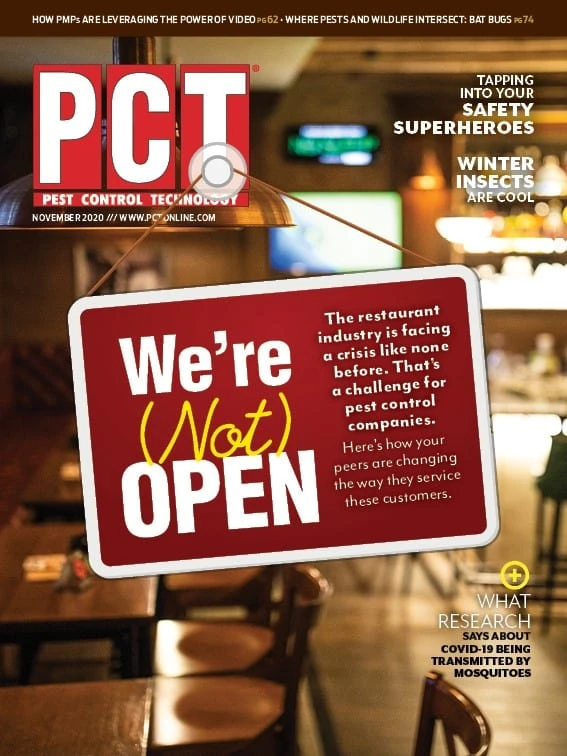
Insecticide treatment was the primary method of bed bug control for 71 percent of PMPs, followed by heat (15 percent), found the PCT 2020 State of the Bed Bug Control Market survey.
In follow-up interviews, most PMPs reported using a combination of treatments to control the pests. “Every strategy has a fault; there isn’t one that is better than the others. It depends on the location and the level of infestations,” said Tom Sieminski of Team Pest Control.Mattress encasements/active mattress liners were offered by 62 percent of PMPs and vacuuming by 48 percent. Rich Schroll, owner of Garfield Pest Control in Merrimack, N.H., first used a vacuum last year for a particularly heavy infestation. It reduced the number of bed bugs that might escape conventional treatment. “Vacuums are definitely something we’ll use on a regular basis,” he said.
The go-to treatment for Rodney O’Quinn of Keller’s Pest Control is heat, but he uses tent fumigation, offered by 12 percent of PMPs, for homes with high levels of clutter. O’Quinn has canines, offered by 16 percent of PMPs, to identify bed bug hot spots and clear homes post-treatment. “That really helps a customer with peace of mind,” he said.
All Florida Pest Control in Hollywood, Fla., combines steam and conventional treatments, said Regional Manager Pedro Alvarez. More than a quarter (26 percent) of PMPs offer steam treatment, found the PCT study.
Brian Metzger of GP Home Defense primarily uses silica desiccant dust and a bio-pesticide. “We do a very meticulous, full top-to-bottom crack-and-crevice treatment. We’ve had phenomenal success,” he said.
PMPs said products with long-lasting residuals made it possible to offer proactive or preventive bed bug services. These deliver recurring revenue while providing clients reassurance and a better way to budget for bed bug control. Bed bug monitoring, an element of these programs, is offered by 48 percent of pest management professionals.
Proactive service appeals to frequent travelers and facilities like shelters and low-income housing where re-infestations are common, but not all clients see the value.
“We tried to do those, but people find it too expensive,” said Alvarez. Others think the market for proactive service will grow, especially among small hospitality clients. “When it comes down to small outfits, reputation is everything,” said Schroll.
The charge for a typical residential bed bug treatment in 2020 was $892. Forty-three percent of PMPs said the price of bed bug control increased in their markets over the past three years, while 45 percent said it was unchanged.
ABC Home & Commercial Services developed an extensive menu of treatment options featuring different approaches and price points. “Having that menu of services allows us the flexibility to really come up with the best treatment,” as well as address clients’ budgetary concerns, said Alan Brown.




Explore the November 2020 Issue
Check out more from this issue and find your next story to read.